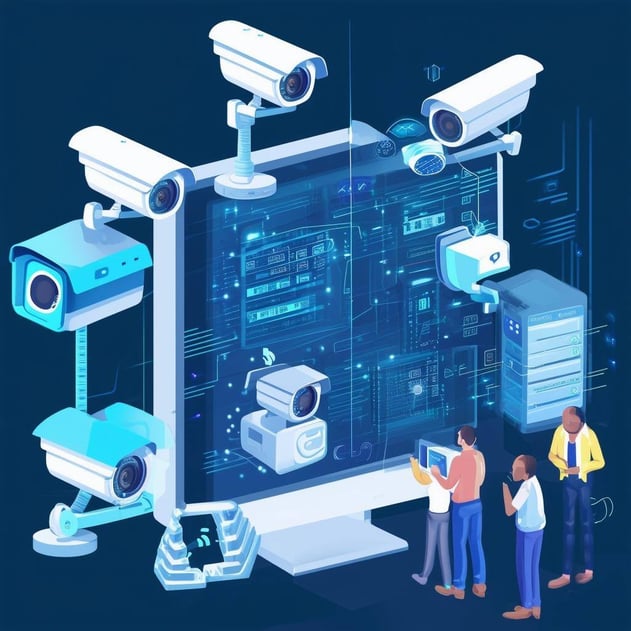- Product
Product Overview
Sophisticated security with unmatched simplicityCloud SIEM
Pre-configured detections across your environmentHoneypots
Deception technology to detect lateral movementEndpoint Visibility
Real-time monitoring with added detection & responseSecurity Reports
Data visualizations, compliance reports, and executive summariesAutomated Response
Detect, prioritize, and neutralize threats around the clockIntegrations
Cloud, on-prem, and open API connectionsXDR Platform
A complete view to identify risk, and things operational
- Pricing
- Why Blumira
Why Blumira
The Security Operations platform IT teams loveWatch A Demo
See Blumira in action and how it builds operational resilienceUse Cases
A unified security solution for every challengePricing
Unlimited data and predictable pricing structureCompany
Our human-centered approach to cybersecurityCompare Blumira
Find out how Blumira stacks up to similar security toolsIntegrations
Cloud, on-prem, and open API connectionsCustomer Stories
Learn how others like you found success with Blumira
- Solutions
- Partners
- Resources
Maintaining visibility across an expanding tech stack can feel like trying to watch dozens of security cameras at once. Between cloud services, on-premises systems, remote endpoints, and various security tools, there are too many places to monitor and not enough time or people to do it effectively.
This is where unified visibility becomes critical. But what exactly does "unified visibility" mean for small IT teams, and how can you achieve it without enterprise-level resources?

The Growing Visibility Challenge
We don't have to educate you on the complexity of today's IT environments. A typical small or mid-sized organization might use Microsoft 365 for productivity, maintain some on-premises servers, support remote workers on various networks, and utilize multiple cloud services. Each of these generates its own logs and security alerts.
Without a unified view, IT teams face several challenges:
- Constant context switching between different tools and dashboards
- Missing critical connections between seemingly unrelated events
- Spending excessive time gathering data for security compliance reports
- Alert fatigue from multiple overlapping tools
The Power of a Single Source of Truth
Unified visibility means bringing all your security and log data into one centralized platform where it can be properly analyzed and correlated. This approach offers several key advantages for small teams:
When all your data is in one place, it's easier to spot patterns and potential threats. For example, you might see a failed login attempt on Microsoft 365 followed by suspicious network activity from the same IP address - something that could be missed if you're monitoring these systems separately.
2. More Efficient Investigation
Instead of jumping between different tools to investigate an incident, unified visibility gives you all the context you need in one place. This can dramatically reduce the time spent on security investigations.
When audit time comes around, having all your security data in one place makes it much easier to demonstrate compliance with frameworks like PCI DSS, HIPAA, or CMMC.
Achieving Unified Visibility Without Enterprise Resources
Achieving unified visibility doesn't require a large security team or complex infrastructure. Here's how to get started:1. Focus on Key Log Sources
Start by identifying your most critical systems. Usually, this includes:
- Identity and access management
- Email and collaboration tools
- Endpoint protection
- Firewall and network logs
Look for solutions that automatically collect and parse logs from your various systems. Manual log collection and analysis simply isn't sustainable for small teams.
3. Use Pre-Built Detections
Instead of writing custom detection rules, leverage pre-built detections that are automatically updated to catch new threats. This ensures you're protected against the latest attacks without requiring constant tuning.
4. Implement Guided Response
When threats are detected, having clear playbooks for response ensures your team knows exactly what to do, even without deep security expertise.
Real-World Impact
We recently worked with a manufacturing company that struggled with visibility across their hybrid environment. After implementing unified visibility through Blumira, they were able to detect and stop a potential data breach within hours of deployment, preventing data theft. The attack, which involved suspicious Office 365 activity followed by unusual network behavior, might have been missed if they were monitoring these systems separately.Getting Started
Unified visibility doesn't have to be complicated or expensive. Start by evaluating your current visibility gaps and looking for solutions that can automatically collect and correlate data from your key systems. (Hint, we can help!) The goal is to spend less time switching between tools and more time actually securing your organization.Ready to see how unified visibility can work for your team? Request a trial to get started.
More from the blog
View All Posts
Security How-To
19 min read
| December 1, 2021
What To Log In A SIEM: Logging Best Practices
Read More
Security Trends and Info
3 min read
| May 14, 2020
What is a Traditional SIEM?
Read More
Security Trends and Info
12 min read
| February 7, 2023
What Are Event Logs and Why Do They Matter?
Read MoreSubscribe to email updates
Stay up-to-date on what's happening at this blog and get additional content about the benefits of subscribing.